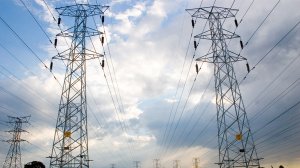Gas-powered electricity generation will play a bigger, more important role in lighting up South Africa in terms of efficiencies, costs and baseload energy than the renewable energy programme that is under way, Econometrix MD Rob Jeffrey suggested on Wednesday.
Discussing the role of gas in the country’s energy portfolio plans during a Fossil Fuel Foundation-hosted workshop, he indicated that increasing the percentage of gas-based energy could drive faster growth in the baseload energy targets than the current energy split unpacked in the Integrated Resource Plan (IRP) for electricity for the period to 2030.
South Africa’s planned IRP would deliver yearly baseload growth of some 2.5% and a 2030 baseload addition of 26 000 MW at an estimated overnight capital cost of some R1.9-trillion.
Enhancing the role of gas, in addition to fossil fuels, in the energy portfolio, and lowering the contributions of wind-, solar- and nuclear-based energy, would increase the baseload growth to 3.6% a year while shaving some R400-billion off the cost of adding thousands of megawatts to the grid by 2030, he said.
It would also bolster the baseload addition to around 36 000 MW.
Jeffrey recommended the doubling of the contribution of coal to about 30 000 MW, which would allow a baseload of 22 587 MW, instead of 13 473 MW, and tripling the percentage contribution of gas to 7 982 MW, which would unlock a baseload of 6 785 MW.
Nuclear, despite being a somewhat favourable addition to the energy mix, should be decreased from the planned 9 600 MW to 1 800 MW, which would deliver a baseload of 1 656 MW, he suggested.
He explained that, while nuclear was a proven, reliable baseload source, South Africa could not afford to develop 9 600 MW, as there was still no surety on cost, with estimates coming in at between R700-billion and R1.2-trillion.
Further, solar and wind power should be reduced from the current targets, which were expected to produce a combined baseload of 6 949 MW, to 4 573 MW and 2 376 MW respectively, he said, pointing out that renewable energy only had an uptime of 30%.
This form of energy was also only cheaper when actually producing – the 70% offline time and dependency on other sources significantly inflated the true cost of output.
The development of energy storage technologies, however, could significantly change the dynamics of renewable energy.
“The thing that could change the whole situation is storage; [however] this is a long way off [from being embedded],” he said, pointing out there would always be a role for renewable energy, but when it came to baseload, coal- and gas-fired power would be key to the country’s energy mix.
Edited by: Creamer Media Reporter
EMAIL THIS ARTICLE SAVE THIS ARTICLE
To subscribe email subscriptions@creamermedia.co.za or click here
To advertise email advertising@creamermedia.co.za or click here













